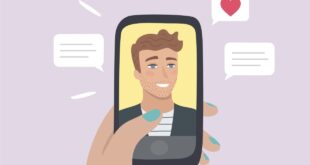My daughter’s cosmetics collection could rival that of a Hollywood makeup artist. With each hasty Ulta or Sephora haul, she introduces a plethora of pricey new products – concealers, moisturisers, lipsticks, brushes – to her beauty routine.
When I ask what sways her impetuous cosmetic purchase preferences, her answer is always the same: social media.
Makeup brands aggressively promote their products on Instagram, TikTok and other social media platforms, often creating a frenzy and FOMO (fear of missing out) with each new colour palette or acne treatment they unveil.
It’s not just cosmetics companies spurring social media-inspired spending. Bankrate’s latest survey on social media users’ spending revealed that Americans made US$71bil (RM335.65bil) in impulse purchases of products they saw on a social media platform in the past year, with the average spontaneous buyer spending US$754 (RM3,564). The financial services site’s poll also found that 57% regretted at least one of those impromptu purchases.
“It’s so easy to buy something online – sometimes it’s too easy,” says Ted Rossman, senior industry analyst with Bankrate. “With just a single click you could have the item on its way to your doorstep. Anytime, day or night, you could be scrolling through your phone and encouraged to make a purchase.”
Not exactly surprising, younger generations are more likely to have made an impulse purchase of a product they saw on social media in the past year, with 53% of millennial and 51% of Gen Z social media users making an impulse purchase versus 34% of Gen X and 25% of baby boomer social media users.
Gender also plays a role. The Bankrate survey found that men who made an impulse purchase inspired by social media in the past year spent an average of US$999/RM4,722 (US$200/RM945 median), while women spent an average of US$518/RM2,448 (US$150/RM709 median).
Shopping made (too) easy
Emotions such as boredom and jealousy can often spur a social media buying bender, says Rossman. So too can a late-night, boozed-induced shopping spree. Finder, another financial services comparison site, found that one in six Americans shop while under the influence, spending roughly US$300 (RM1,418) each over a 12-month period.
“This is why I think a 24-hour rule could be a useful way to deter impulse buys,” suggests Rossman, “Sleep on it first; you might decide you don’t want or need that item after all.”
Rossman also suggests making the process of online purchasing more of a hassle by unlinking credit and debit card information from retailers’ websites. Be sure to also turn off any buy-with-one-click payment options.
“The friction of needing to find your wallet and type in your card number might be enough to avoid an unnecessary purchase,” he says.
The ease of the buy-now-pay-later purchase option is also likely contributing to an uptick in impulsive spending, says Rossman. Companies like Affirm, Afterpay, Klarna and PayPal allow payment purchases to be split into multiple equal, interest-free installments. If a merchant partners with such a program, it will be offered at checkout. Sign-up can be done on the spot.
“While these services can be used in stores, ecommerce is their sweet spot,” says Rossman. “And while they can sometimes represent useful deals, they can also encourage some mental accounting that leads to overspending. As in, it’s not a US$200 purchase, it’s just four easy payments of $50 (RM236). That can obscure the true cost of ownership.”
Effective emotional marketing
Companies spend a significant amount of time and money studying what makes shoppers tick. They will work on ways to tap deeper into human emotions and create marketing tactics that use deliberate and persuasive messaging. These companies hope to trigger an emotional response – whether it’s joy, anger or FOMO – that will be strong enough to influence decision-making and incite action.
Clothing and accessory brands do a really good job of enticing buyers, but buyers can also be easily persuaded to purchase experiences, too, like travel, dining, and concert tickets – if the emotional marketing is effective.
“These are all photogenic categories and we might be encouraged to buy after seeing someone looking good or doing something fun and interesting in a social media post,” says Rossman.
And, even though the Bankrate survey found that half of social media users agree that the real people and influencers who peddle the goods and share the latest in beauty, fashion and travel and more are promoting unrealistic lifestyles, they are still helping to not only create trust in the brand but also pressure to buy.
“Keep in mind that what you see on social media isn’t always realistic,” Rossman adds. “That refers to your friends’ posts and perhaps rings even more true for influencers. We’re conditioned to want to put our best foot forward, but keeping up with the Joneses can land you in debt. And buying whatever you see in that perfectly posed photo probably doesn’t contain the key to happiness.” – Times Union, Albany, N.Y./Tribune News Service
 BeritaKini.biz Berita Viral Terkini di Malaysia
BeritaKini.biz Berita Viral Terkini di Malaysia





